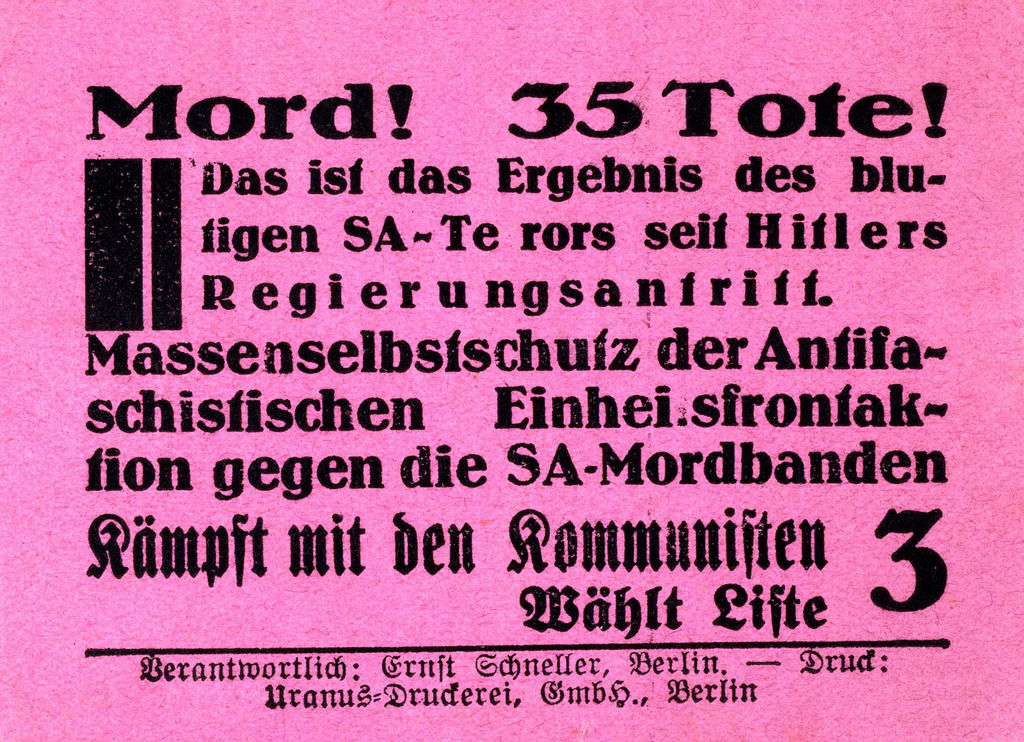Source

Source: KPD election campaign flyer, Berlin, March 1933. 6,6 x 8,8 cm. Deutsches Historisches Museum, Berlin. Inv.-Nr. Do2 89/1038.5.
The Nazi rise to power was accompanied by a marked increase in street violence, especially direct action against Jews and political enemies, such as Socialists and Communists. Leading this violence was the Sturmabteilung (SA), the NSDAP’s paramilitary group, which acted as a self-appointed auxiliary police force in the first months of Nazi rule. Despite the risk of violence from both the SA and the regular German police and the arrest of their party leaders, KPD members still managed to run a clandestine campaign in advance of the March 1933 Reichstag elections. This KPD flyer highlighted the Nazis’ violence and repressive tactics, and called for Germans to join a united front against fascism. The communists managed to secure 12% of the vote in the election, despite the prohibitions and risks. Still, it was not nearly enough to make a difference in the Reichstag’s configuration, as the NSDAP held 44% of the vote. On July 14, 1933, the NSDAP used their strength and plurality to introduce the Enabling Act and to ban all other parties.

Source: KPD election campaign flyer, Berlin, March 1933. 6,6 x 8,8 cm. Deutsches Historisches Museum, Berlin. Inv.-Nr. Do2 89/1038.5.
Deutsches Historisches Museum